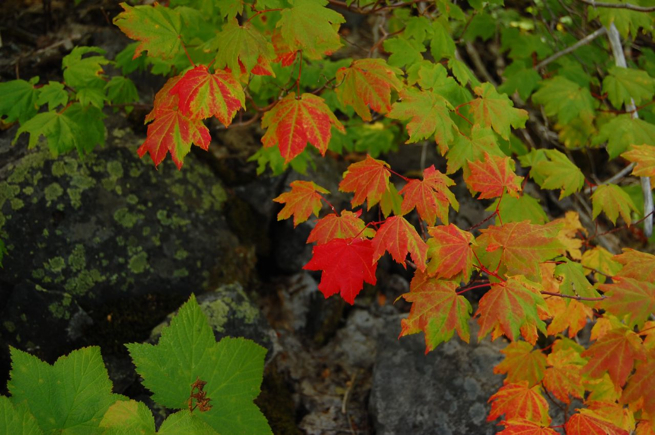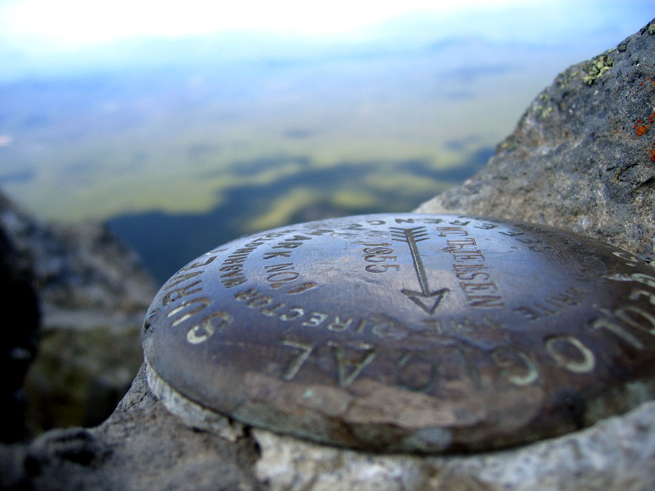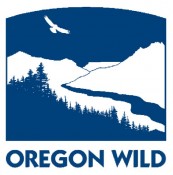Preserving Wilderness and Watersheds With Oregon Wild
July 29th, 2012
Podcast: Download (Duration: 46:26 — 42.5MB)
Sean Stevens from Oregon Wild
Treehuggers International is pleased to welcome Sean Stevens, the Executive Director of Oregon Wild, to talk about the curiously unique issues which wilderness advocates face in the Beaver State, as well as the incredible volume of proposed Wilderness and Wild and Scenic River designations waiting to be approved by Congress.
A special thanks to the staff of Oregon Wild for allowing us into their offices in Portland to record this show, and a special thanks not only to Sean for making time to appear on the show, but also to former Oregon Wild Executive Director Scott Shlaes, now the Director of Development for Sustainability Initiatives at Portland State University.
Crossroads of Climate and Diversity
Boasting an incredible coastline, several major mountain ranges, high desert, thousands of miles of forest and timberland, one of the most biologically diverse areas on the planet in the Siskiyou-Rogue, one of the most iconic National Parks in the west, and the Columbia River Gorge to the north and Hell’s Canyon to the east, Oregon makes a strong case as one of the great outdoor destinations in the western U.S., if not the world.
Beyond the major populations centers straddling the Willamette Valley, Oregon remains sparsely populated, but with the state’s historically cozy relationship with the timber industry, setting aside wilderness other than the “rock and ice” of the highest peaks has often proven to be a long, difficult fight.
Helping Secure A Deserved Wilderness Legacy
Originally called the Oregon Natural Resources Council, Oregon Wild has helped preserve nearly 1.7 million acres of designated wilderness in the state since the organization was formed in 1974. Oregon Wild has also helped establish 1,800 miles of Wild and Scenic River protections on rivers and waterways throughout Oregon, including the state’s iconic Rogue River, one of the great white-water destinations and wild rivers in the U.S.
Powered by an active grassroots citizens network, Oregon Wild has made the preservation of the state’s remaining old-growth forest and watersheds a priority, and is committed to protecting hiking, backpacking, and fishing opportunities, and working to cut down on habitat dissection and ensuring environmental law is enforced.
The primary mission of Oregon Wild is to protect and restore Oregon’s current wilderness areas, and advocate for wilderness designation in roadless areas like the Devil’s Staircase in the Coast Range, North Fork John Day, or the Waldo Lake shoreline.
The organization also seeks to expand current wilderness around Mt. Hood, Crater Lake, Mt. Thielsen, the Wallowas, the Rogue River Valley and dozens of other significant locations around the state, but over the last several years Oregon Wild and similar conservation organizations have had a number of peripheral, yet pressing issues presented to them.
Old Railroad Lands to WOPR to Wolves
Oregon Wild has been actively involved in securing an appropriate solution to the state’s BLM-managed O&C Lands, or rather, “Oregon and California” lands formerly belonging to the Oregon and California Railroad, which the federal government won back from the railroad in the 1930s. Maddeningly checkerboarded as private and federal land, the O&C Lands make for a dizzying mix of management, and encompass some of the most vulnerable old-growth and roadless areas of the state.
Oregon’s southwestern counties have also been contending with funding issues regarding the expiration of Secure Rural Schools Act, as well as ongoing fallout from the Western Oregon Plans Revision (or WOPR), itself an attempt to restructure the landmark 1994 Northwest Forest Plan.
Oregon Wild has also been active advocating for the safe return of wolves to the state’s wilderness as a vital component of native Oregon ecosystems. The wolf OR-7, renamed “Journey,” recently became the first wolf in decades to cross into California from Oregon in decades, and his path across wilderness areas and connected habitat clearly demonstrates the success of setting aside vast tracts of land as wilderness for native species, inherently valuable in its own natural, benign way.
More about this post at:
- Oregon Wild
- Oregon Wild Map Gallery
- Mt. Hood Wilderness Campaign
- Wolves Howling In the Wild Caught On Camera (KPTV; 8/3/12)
- O and C Land Use Versus Land Abuse (Eugene Weekly; 8/1/12)
- Gill-Netting Initiative: Oregon Voters Get Opportunity to Protect Wildlife (The Oregonian; 7/23/12)
- Kurt Schrader Goes Rogue On Public Lands Logging (Blue Oregon; 7/13/12)
- Agencies Say Wolf Was Killed Illegally (Blue Mountain Eagle; 7/13/12)
- Prospect of Federal Timber Payments Won’t Mean Rehiring Deputies (The Oregonian; 6/28/12)
- A Timber Harvest Without A Legal Battle? (Public News Service; 6/28/12)
- New Handbook Recommends Balance for Managing Eastern Oregon Forests (The Oregonian; 6/15/12)
- Kitzhaber Appoints Adviser To Work On O and C Issues (Oregon Public Broadcasting; 5/24/12)
- Wolves In Oregon: Bigger, Badder Than Before? (La Grande Observer; 3/5/12)
- Rural Oregon Counties Scramble As Timber Payments Dry Up (The Oregonian; 3/4/12)
- Another Avenue for Rogue and Devil’s Staircase Wilderness (Pew Environment Group; 3/1/12)
- Oregon House Debates Logging Bill (The Oregonian; 2/27/12)
- Timber Management Plan Offers Lifeline to Counties (McMinnville News-Register; 2/25/12)
- Lawmakers Unveil Details for Replacing Oregon’s Timber Payments Program (The Oregonian; 2/16/12)
- Groups Offer Solution to Timber County Crisis (Associated Press; 2/12/12)
- Oregon Counties Face Sinking Budgets As Federal Payments End (The Oregonian; 12/19/11)
- Bill Would Sell Off Public Lands in the Northwest (Oregon Public Broadcasting; 10/25/11)
- Devil’s Staircase Protections Once Again Before Lawmakers (KLCC; 10/25/11)
- Groups Push to Expand Crater Lake Wilderness (Klamath Falls Herald and News; 7/28/11)
- Oregon Delegation Reintroduces Wilderness Bills (Eugene Register-Guard; 4/10/11)
- Senate Takes Key Step Toward Creating New Wilderness (Eugene Register-Guard; 6/25/10)
- Oregon Caves, Devils Staircase Closer to Wilderness Status (Oregon Public Broadcasting; 6/23/10)
- Crater Lake Wilderness: Oregon’s “Best Idea” Needs Protection (The Oregonian; 10/17/09)
- Conservationists Want to Protect 30,000 Acres of Pristine Beauty (Eugene Register-Guard; 6/8/09)











